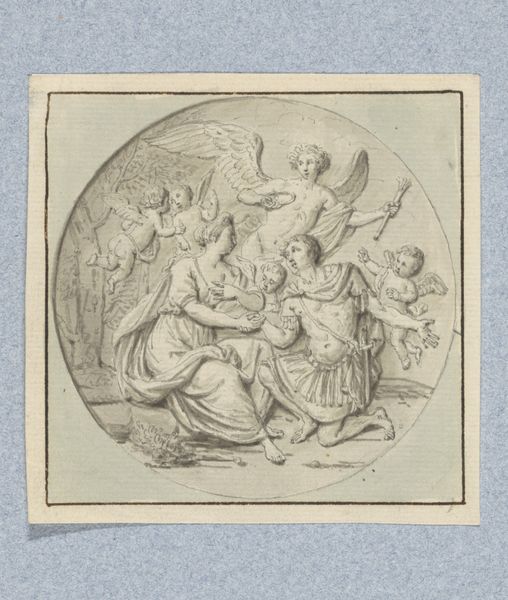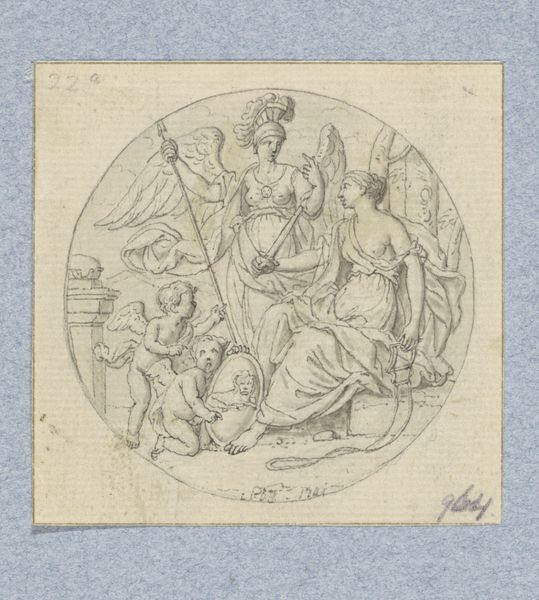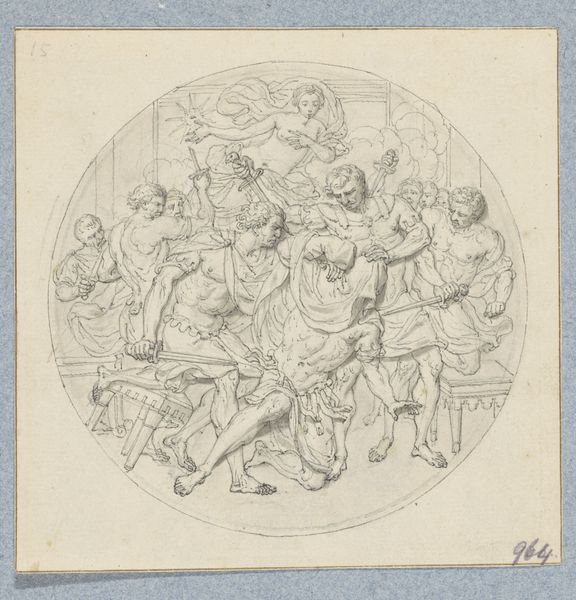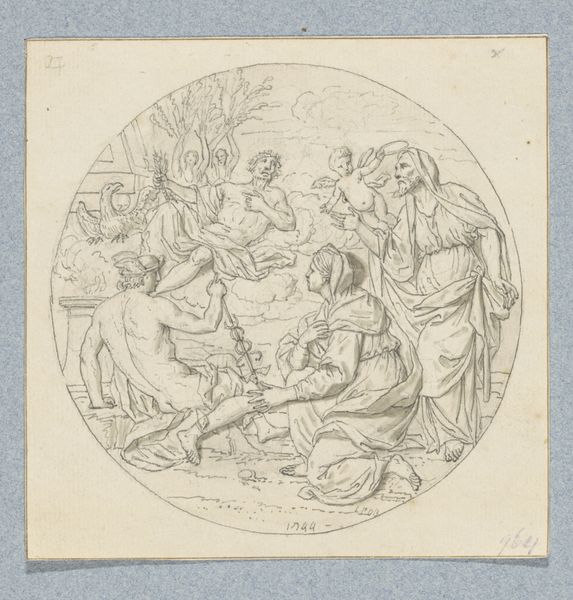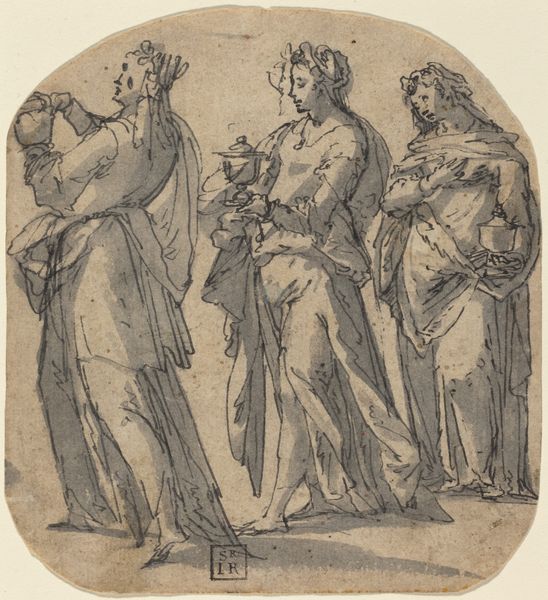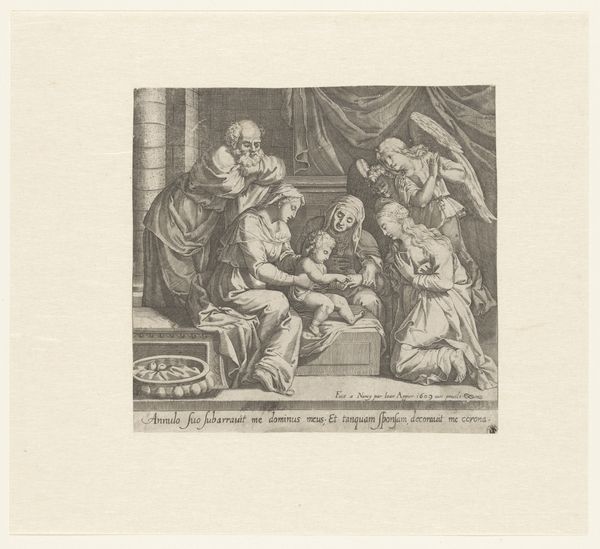
Orpheus speelt voor Pluto en Proserpina (in doos met 43 tekeningen) 1703 - 1775
0:00
0:00
louisfabritiusdubourg
Rijksmuseum
drawing, paper, pen
#
portrait
#
drawing
#
aged paper
#
paper non-digital material
#
allegory
#
baroque
#
sketch book
#
personal journal design
#
figuration
#
paper
#
personal sketchbook
#
sketchwork
#
journal
#
sketchbook drawing
#
pen
#
history-painting
#
storyboard and sketchbook work
#
sketchbook art
Dimensions: height 78 mm, width 78 mm
Copyright: Rijks Museum: Open Domain
Curator: At first glance, it looks like a rehearsal for a very stylish, very ancient play. There's a certain solemnity, even in the sketches. Editor: This pen drawing offers us Louis Fabritius Dubourg's vision of "Orpheus Playing Before Pluto and Proserpina." Created sometime between 1703 and 1775, it resides within a box containing 43 other drawings at the Rijksmuseum. Curator: Forty-three! That changes things. Suddenly this isn’t a standalone artwork. It’s a glimpse into a process, maybe a series of ideas bubbling up to the surface. A sketchbook reveals such secrets, doesn't it? The Baroque was the era of grand gestures, theatrical flair and this is a scene fit for any grand theatre. I’d be curious about the narrative purpose of those drawings. Editor: Precisely. Orpheus, a legendary musician and poet, descended into the underworld, Hades—ruled over by Pluto and Proserpina—to plead for the return of his wife, Eurydice. The lyre is of course his iconic symbol: here, it clearly indicates that Orpheus's performance is what transfixes the king and queen. It represents a bridge between realms—between life and death, joy and sorrow. It attempts to negotiate fate itself! Curator: Ah, and that expression on Proserpina's face—is it grief, or pity? Is Pluto moved, or merely considering the performance a temporary distraction from ruling the dead? You’re right, the lyre symbolizes that delicate bridge and is as such heavy with emotional bargaining chips! Is he convincing them or irritating them, or something more subtle? I suppose a sketch captures an instant, and makes one wonder what happens moments later. Editor: Well, Dubourg has employed certain iconographic traditions, but then imbued it with ambiguity. We’re drawn into a timeless narrative, made freshly new with just a few pen strokes. The symbols, from Pluto’s scepter to Orpheus’s drapery, resonate, but it is really Proserpina's gaze which, through her position in the centre of the work, pulls our interest. The symbols offer multiple layers, but do not prescribe just one outcome! Curator: Absolutely. It makes me ponder what music Orpheus would actually play—something ancient, timeless, echoing through the chambers of our hearts as well as theirs. Perhaps we, as viewers, complete the performance, providing our own emotional score. Editor: An exquisite thought. Perhaps it is the eternal music of love and loss itself, played on the heartstrings of shared human experience.
Comments
No comments
Be the first to comment and join the conversation on the ultimate creative platform.
